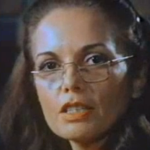From Puppets to Pixels (Animated Shorts by Jan Svankmajer, Caroline Leaf, Břetislav Pojar, Lillian F. Schwartz, 48 min)
Rooftop Cinema @ Madison Museum of Contemporary Art, Friday, August 22, 8:30pm»
For those who missed Rooftop Cinema screenings in June, programmer Tom Yoshikami has assembled one last show featuring films by all the filmmakers showcased this summer. Rob Thomas selected this final Rooftop screening as his Pick of the Week at his Madison Movie blog, so you should do your best make it tomorrow night. Perhaps the best way to introduce yourself to the work of these animators is to check out some of the films that have already been screened.
 Jan Svankmajer (b. 1934)
Jan Svankmajer (b. 1934)
Czech filmmaker Jan Svankmajer is the filmmaker you’re most likely to be familiar with, since he has produced a wide range of short films and several well known feature films like Alice (1988) and Little Otik (2000). He’s an example of a significant filmmaker who is not well represented in the world of (official) online streaming (I can only find Alice currently on Netflix), but his work is better represented at Four Star Video Coop and the Madison Public Library.
Friday’s screening will include Dimensions of Dialogue (1983), one of Svankmajer’s best known short films. If you missed his Rooftop screening in June, here is another well known short that was featured, Jabberwocky (1971):
 Caroline Leaf (b. 1946)
Caroline Leaf (b. 1946)
Leaf is an American-born animator who has produced a critically acclaimed body of work for the National Film Board of Canada. In June, Rooftop featured her most famous film, The Street (1976), which ranked second on the list of the world’s 50 best animated films at the 1984 Animation Olympics in Los Angeles. She is well known for her technique of animating sand on glass, but she has also experimented with a range of other techniques, including scratching directly on 70mm film for Two Sisters (1990), which won Best Short Film at the Annecy Animated Film Festival. The Street was included in the DVD titled Leonard Maltin’s Animation Favorites from the National Film Board of Canada, which is available at the Madison Public Library. Your other best bet for accessing her films is the National Film Board of Canada; check their website and various NFB apps (like their Roku channel). This Friday’s Rooftop screening will feature her documentary collaboration with experimental filmmaker Veronika Soul, Interview (1979) and a very short clip produced for MTV, I Met a Man (1991).
The Street by Caroline Leaf, National Film Board of Canada
 Břetislav Pojar (1923-2012)
Břetislav Pojar (1923-2012)
Břetislav Pojar began his career as an assistant to the legendary Czech puppet animator, Jiří Trnka, but he quickly moved on to produce his own impressive body of work using puppet, stop-motion, and conventional cel animation. Like Caroline Leaf, he emigrated to Canada to work with the National Film Board of Canada, thus he worked within two major traditions that responded to and distinguished itself from conventional American studio animation: Eastern Europe and Canada. As with Leaf’s work, your best bet to catch up with official video copies of Pojar’s work is the National Film Board of Canada and its various streaming resources. The upcoming Rooftop screening will feature one of his later Canadian films, Narkoblus (1997), but here is an unofficial YouTube posting of an earlier film that Rooftop featured in June, To See or Not To See (1969), which won Best Short Film at the Berlin International Film Festival.
 Vivian F. Schwartz (b. 1927)
Vivian F. Schwartz (b. 1927)
Personally, the real discovery of this summer’s Rooftop Cinema has been the work of Vivian F. Schwartz, which I have to admit I was not familiar with before the initial publicity for the series. (So thanks, Tom, as always, for opening our eyes to new and interesting work at Rooftop.) Experimental animator Jodie Mack (featured at the 2014 Wisconsin Film Festival) wrote on Facebook about Schwartz: “Love her long time.” Perhaps because she is the least well known of the four Rooftop filmmakers, she is given the most screen time in the final screening (okay, by about 30 seconds, but she also has the most titles, with three). There are several historians and academics working to preserve and promote Schwartz’s work, including the Orphan Film Symposium. But the best resource for information about Schwartz and her influential career is lillian.com, a website currently under construction. There you will find Vimeo and YouTube links to several of Schwartz’s films, above and beyond those showcased at Rooftop Cinema. Instead of embedding one of those many films, here is part one of a documentary produced by AT&T about her work and her process, The Artist and the Computer (1976, part two is posted here): The best way to support this kind of work in Madison is to attend screenings like Rooftop Cinema when you can. But if you can’t go tomorrow night, do your best to catch up with what you’re missing so that you’ll know not to miss it next time around.